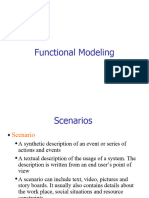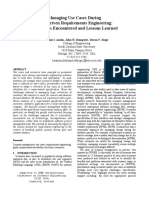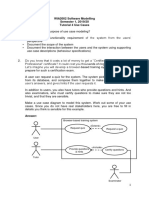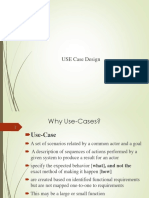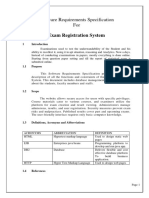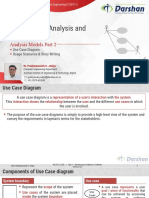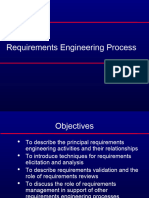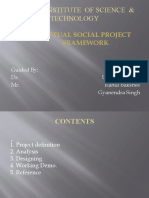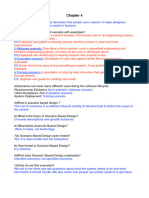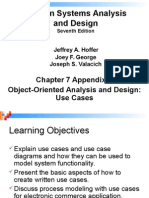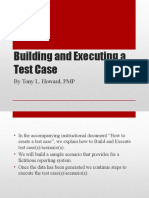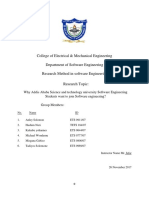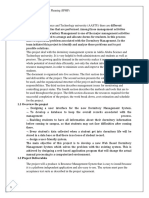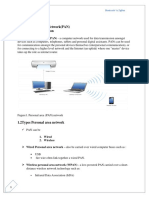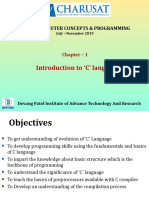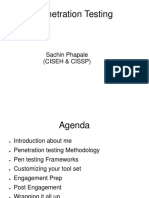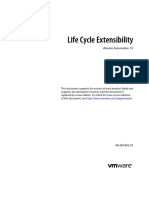0% found this document useful (0 votes)
202 views27 pagesSoftware Engineering Scenarios
This document provides information about scenarios and use cases in software engineering. It discusses scenarios as a tool used in requirements analysis to describe specific uses of a proposed system from an outside perspective like a user. The document then gives guidelines for describing a scenario, including its purpose, users, assumptions, and steps. It provides an example of developing a scenario with a client for an online exam system, including questions asked of the client to flesh out details of a scenario describing a typical student's use of the system.
Uploaded by
ለዛ ፍቅርCopyright
© © All Rights Reserved
We take content rights seriously. If you suspect this is your content, claim it here.
Available Formats
Download as PDF, TXT or read online on Scribd
0% found this document useful (0 votes)
202 views27 pagesSoftware Engineering Scenarios
This document provides information about scenarios and use cases in software engineering. It discusses scenarios as a tool used in requirements analysis to describe specific uses of a proposed system from an outside perspective like a user. The document then gives guidelines for describing a scenario, including its purpose, users, assumptions, and steps. It provides an example of developing a scenario with a client for an online exam system, including questions asked of the client to flesh out details of a scenario describing a typical student's use of the system.
Uploaded by
ለዛ ፍቅርCopyright
© © All Rights Reserved
We take content rights seriously. If you suspect this is your content, claim it here.
Available Formats
Download as PDF, TXT or read online on Scribd
/ 27







